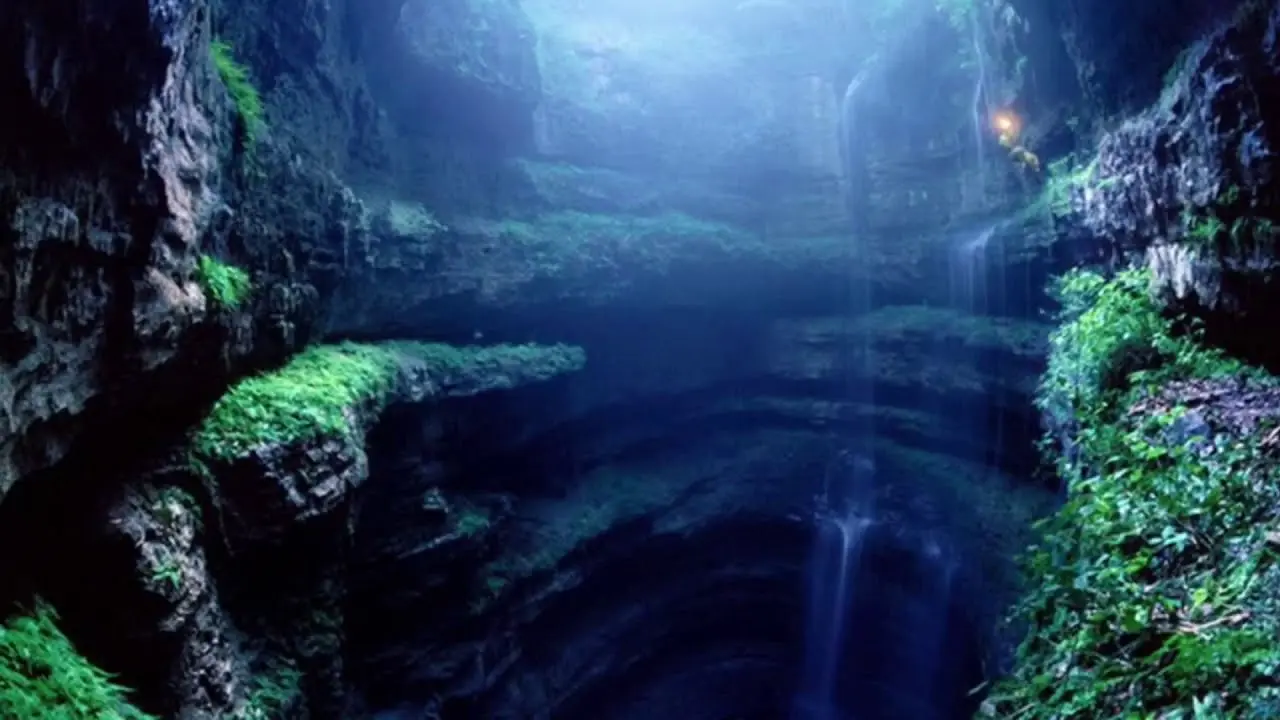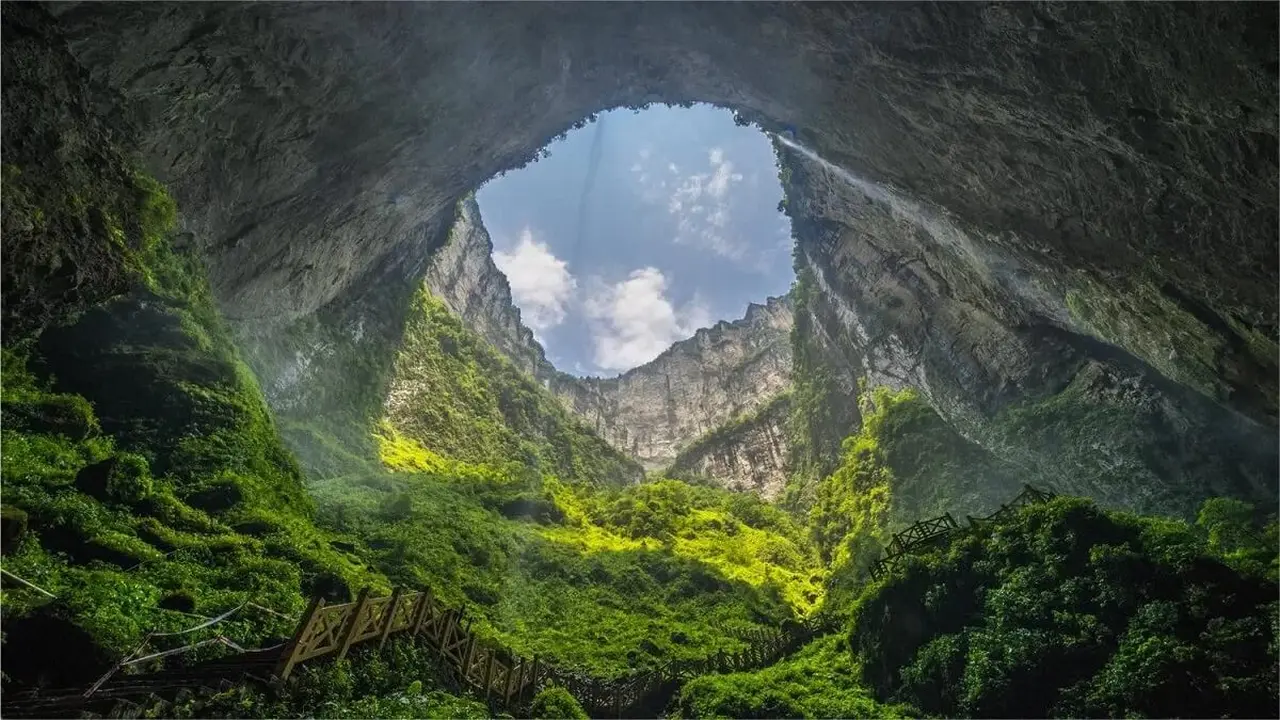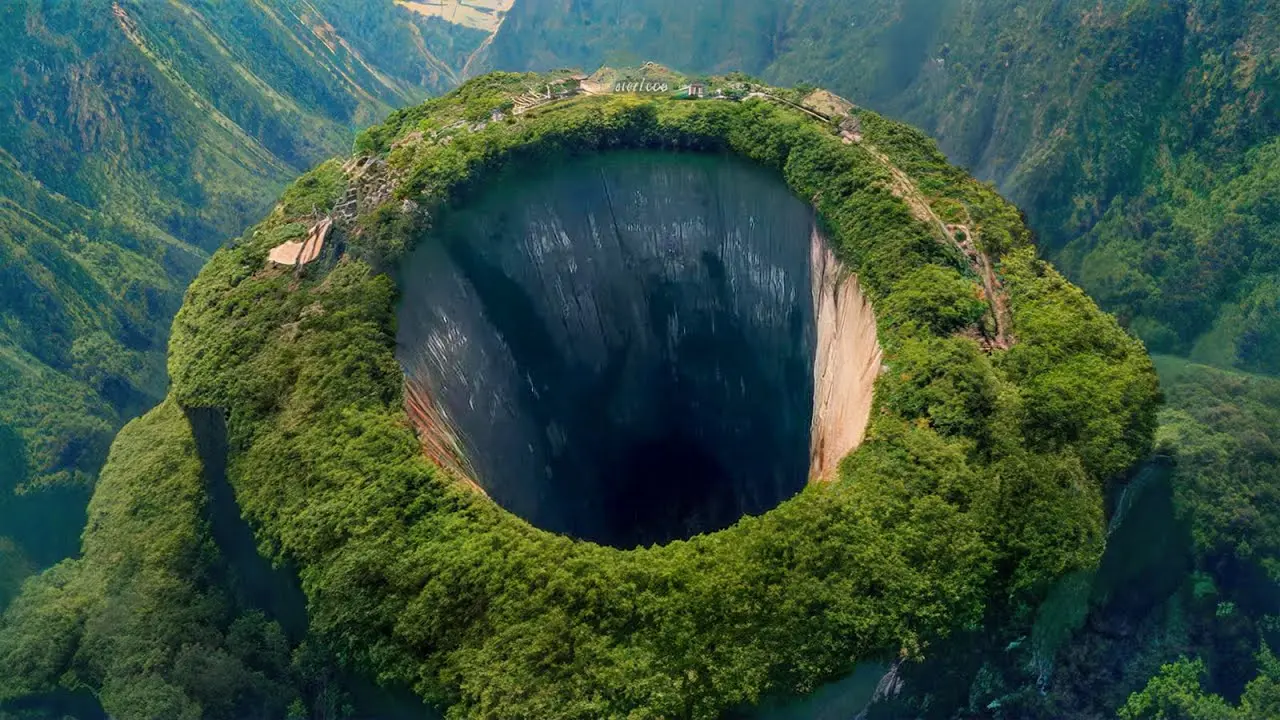Xiaozhai Tiankeng sinkhole was recognized as a UNESCO World Natural Heritage Site in 2007. Protecting and promoting the value of this heritage site is a shared responsibility of the community. Visitors are encouraged to adhere to safety regulations and practice environmental awareness to help preserve the pristine beauty of Xiaozhai Tiankeng for future generations.
Also known as “Heavenly Pit” or “Heaven’s Sinkhole,” Xiaozhai Tiankeng is the deepest sinkhole in the world and the largest among the sinkholes in the Shaanxi region. It is located in Fengjie County, Chongqing City, China.
Imagine a sinkhole so deep that it takes half a day or more to hike down and climb back up. That’s the reality of Xiaozhai Tiankeng, the world’s deepest sinkhole. Situated in Fengjie County, China, this awe-inspiring geological marvel boasts an incredible depth of 2,172 feet (662 meters).

Nestled in the pristine forests of Fengjie County, Chongqing City, Xiaozhai Tiankeng is referred to as the “Heavenly Pit” for its majestic and mysterious beauty. With a depth of 662 meters and a diameter of 537 meters, it officially holds the title as the world’s deepest and largest sinkhole, drawing the attention of tourists and scientists from across the globe.
For centuries, Xiaozhai Tiankeng remained hidden from the outside world. Local residents may have known about it long ago, but it wasn’t until 1994 when a team of British explorers stumbled upon it that it gained international recognition. In fact, the sinkhole formed over millions of years through the relentless erosion of underground rivers dissolving limestone, creating this nearly vertical and breathtaking formation.
Inside the sinkhole lies a vast and intricate system of underground caves, deemed world-class in size and scale. A subterranean river flows through the bottom of the sinkhole, forming a magnificent natural landscape. The steep rock walls surrounding the sinkhole leave visitors in awe. Additionally, Xiaozhai Tiankeng is home to about 1,300 plant species, including many rare ones, as well as over 300 animal species, including the elusive clouded leopard.

Xiaozhai Tiankeng is more than just a giant hole in the ground. Its unique climate, with its own micro-weather system and lush vegetation, has fostered a distinct ecosystem. A total of about 1,300 plant species, including ginkgo trees, and rare animals such as clouded leopards and Chinese giant salamanders, have been discovered in the sinkhole. Due to its remote location, many of the flora and fauna within the sinkhole have not been recorded elsewhere, potentially making them new discoveries for science.
Geologists estimate that Xiaozhai Tiankeng formed approximately 128,000 years ago due to the collapse of a massive limestone cave. For thousands of years, underground water eroded and weakened the cave structure, eventually leading to its collapse and creating this colossal sinkhole. In fact, China is home to numerous sinkholes, collectively referred to as “tiankeng.” The term “tiankeng” means “heavenly pit” in Chinese and refers to a specific group of geological formations.

Conquering this giant requires serious planning and a high level of physical fitness. Descending to the bottom can take up to four hours, involving steep and uneven terrain. Climbing back up is no easier, and appropriate safety gear is essential. However, a 2,800-step staircase has been constructed to make the hike somewhat easier.
The sinkhole has a staggering volume of up to 6.7 million cubic meters — a rare figure that has led experts to describe it as a “world-class geological wonder.” To reach the bottom of Xiaozhai Tiankeng, visitors must conquer an 800-meter trekking route with a steep incline. However, the challenge is well worth it as visitors immerse themselves in breathtaking natural scenery and enjoy the cool, fresh air. With its pristine beauty, grand scale, and unique ecosystem, Xiaozhai Tiankeng has become a popular tourist destination for visitors worldwide. Tourists can engage in activities such as trekking, cave exploration, sightseeing, and learning about the area’s rich ecosystem.

The scale of Xiaozhai Tiankeng is truly astonishing. The Empire State Building — an enormous skyscraper — could fit entirely inside the sinkhole, with plenty of space left over! A subterranean river still flows beneath the sinkhole, possibly contributing to its ongoing formation. The unique environment inside the sinkhole even has its own weather system, with temperatures often cooler than the surrounding areas.
Xiaozhai Tiankeng not only captivates visitors with its majestic natural beauty but also holds immense scientific value. It is an ideal destination for those who love exploring nature and learning about unique geological phenomena.






